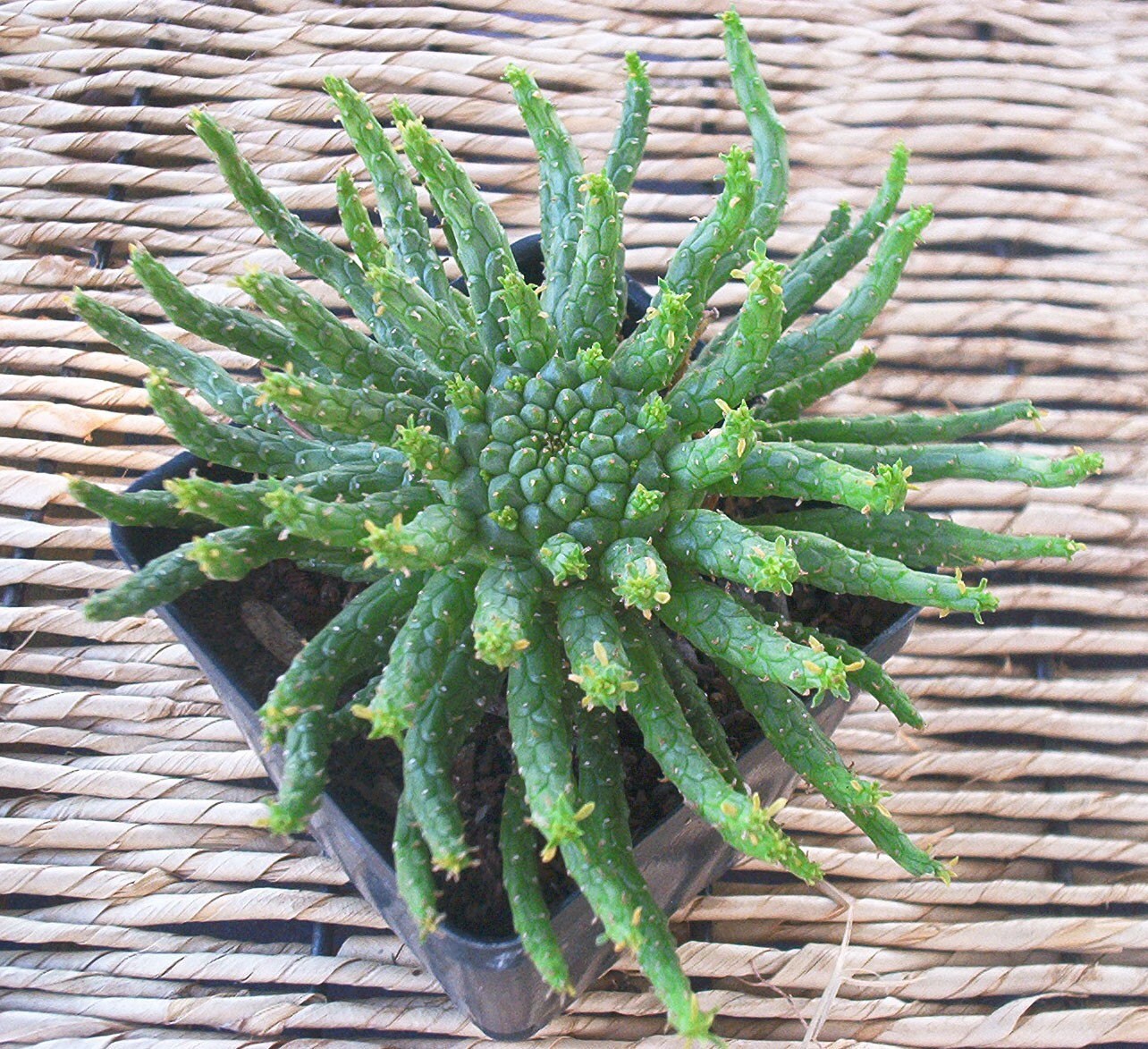Caput Medusae air plants, with their striking foliage and unique growth patterns, have captivated plant enthusiasts worldwide. Originating from the tropical regions of South America, these epiphytes have adapted to thrive in diverse environments, offering a touch of greenery to any space.
This guide delves into the captivating world of Caput Medusae air plants, exploring their unique characteristics, care requirements, and creative display ideas. Whether you’re a seasoned plant parent or a novice gardener, this comprehensive overview will equip you with the knowledge and inspiration to cultivate and showcase these fascinating plants.
Caput Medusae Air Plant
The Caput Medusae air plant, scientifically known as Tillandsia caput-medusae, is a unique and captivating species of air plant that belongs to the Bromeliaceae family. It is characterized by its striking appearance, consisting of a central rosette of tightly coiled leaves that resemble the venomous snakes adorning the head of Medusa in Greek mythology, hence its captivating name.
Origin and Natural Habitat
The Caput Medusae air plant is native to the tropical and subtropical regions of Central and South America, where it is found growing in abundance on trees, rocks, and other surfaces in humid and shady environments. These air plants have adapted to their epiphytic lifestyle, deriving their moisture and nutrients from the air and rainfall rather than through soil-based roots.
Growth Habits and Care Requirements
The Caput Medusae air plant exhibits a slow growth rate, typically forming small clumps over time. It prefers bright, indirect light and can tolerate low-light conditions but may not thrive or bloom as well. Regular misting is essential to provide moisture, especially during dry seasons. Fertilizing the air plant monthly with a balanced, diluted fertilizer during the growing season can promote healthy growth and flowering.
Cultivation and Propagation: Caput Medusae Air Plant

Caput Medusae air plants are relatively easy to care for and propagate. Here are some tips to help you keep your plants healthy and thriving:
Propagation
Caput Medusae air plants can be propagated by division or by seed. Division is the easiest method, and it can be done at any time of year. To divide a plant, simply remove the offsets (small plants that grow around the base of the mother plant) and pot them up individually. Seeds can also be used to propagate Caput Medusae air plants, but this method is more difficult and time-consuming.
Watering, Caput medusae air plant
Caput Medusae air plants do not need to be watered very often. In fact, overwatering is one of the most common mistakes that people make when caring for these plants. Allow the soil to dry out completely between waterings, and then water deeply until water runs out of the drainage holes in the bottom of the pot. During the winter months, you may only need to water your Caput Medusae air plant once a month.
Fertilizing
Caput Medusae air plants do not need to be fertilized very often. Fertilize your plants once a month during the growing season with a balanced liquid fertilizer. Do not fertilize your plants during the winter months.
Lighting
Caput Medusae air plants prefer bright, indirect light. They can also tolerate low light conditions, but they may not grow as quickly or produce as many flowers. If you are growing your Caput Medusae air plant indoors, place it in a window that receives bright, indirect light.
Common Pests and Diseases
Caput Medusae air plants are generally pest-free and disease-resistant. However, they can be susceptible to mealybugs, scale, and aphids. If you see any pests on your plant, you can treat them with a mild insecticidal soap. Caput Medusae air plants can also be susceptible to root rot, which is caused by overwatering. If you see any signs of root rot, such as brown or black roots, you should repot your plant in fresh, well-draining soil.
Creative Uses and Displays

Caput Medusae air plants are not only fascinating botanical wonders but also versatile decorative elements that can enhance any home. Their unique appearance and ability to thrive in various environments make them ideal for a wide range of creative uses and displays.
Incorporating into Home Decor
Caput Medusae air plants can be effortlessly integrated into home decor to add a touch of greenery and visual interest. They can be displayed on shelves, tables, or windowsills, adding a whimsical element to any room. Their compact size allows them to fit into small spaces, making them suitable for even the most petite apartments or offices.
Terrariums and Kokedamas
Caput Medusae air plants are perfect for creating enchanting terrariums and kokedamas. Their small size and ability to tolerate humid environments make them ideal for these miniature ecosystems. In a terrarium, they can be combined with other small plants, such as ferns or mosses, to create a lush and thriving environment. Kokedamas, or Japanese moss balls, are another creative way to display Caput Medusae air plants. They can be suspended from the ceiling or placed on a table, adding a touch of Japanese aesthetics to any space.
Unique Display Ideas
Beyond traditional displays, Caput Medusae air plants can be used in various innovative ways. They can be attached to driftwood or pieces of bark to create living sculptures or used to decorate picture frames or mirrors. Their ability to attach to surfaces using their aerial roots makes them perfect for these unique and eye-catching displays.